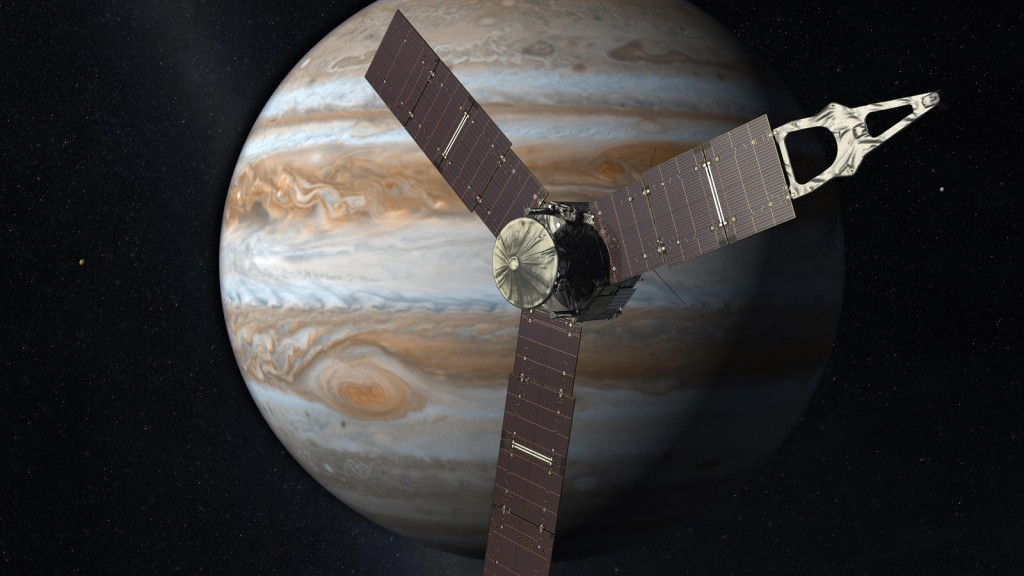A NASA press release announced that solar-powered Juno spacecraft successfully adjusted its flight path to Jupiter on February 3rd. The maneuver adjusted the spacecraft’s trajectory, helping it set its course to the solar system’s largest planet within five months.
51 million miles away from reaching its goal, Juno, a solar-powered spacecraft, carried out an engine burn procedure to correct its course and send it on a straight path towards Jupiter. The maneuver burned 1.3 pounds of fuel and changed the probe’s speed by roughly 0.7 miles per hour.


“This is the first of two trajectory adjustments that fine tune Juno’s orbit around the sun, perfecting our rendezvous with Jupiter on July 4th at 8:18 p.m. PDT [11:18 p.m. EDT],” Scott Bolton, Juno principal investigator at the Southwest Research Institute in San Antonio said.
The second of these trajectory adjustment maneuvers is scheduled to take place on May 31th, NASA officials said.
The spacecraft began its course back in August 2011. Its purpose is to map Jupiter’s gravitational and magnetic fields in greater detail as it orbits the gas giant a total of 33 times over the course of its mission. It will travel within 3,100 miles of the massive planet’s atmosphere once every two weeks.
Scientists hope the probe will help them learn about how Jupiter formed, evolved and how it has influenced the growth and evolution of the solar system.
Juno, which cost $1.1 billion, is equipped with three 30-foot-long solar panels, which together hold a total of 18,698 individual solar cells that will help the spacecraft making the long journey to Jupiter. Such extensive light-collecting gear is necessary to power the spacecraft in the relatively indistinct environment around Jupiter, which orbits more than five times farther from the sun than Earth does.
This solar-powered spacecraft broke the record last month for the farthest-traveling solar powered probe in the history of space exploration. The European Space Agency’s Rosetta previously held the record, having traveled a total of 492 million miles from Earth in October 2011.
Source: NASA
